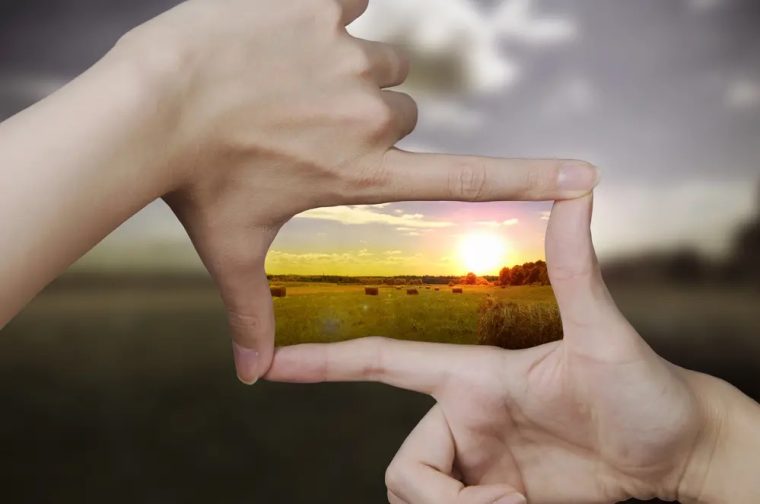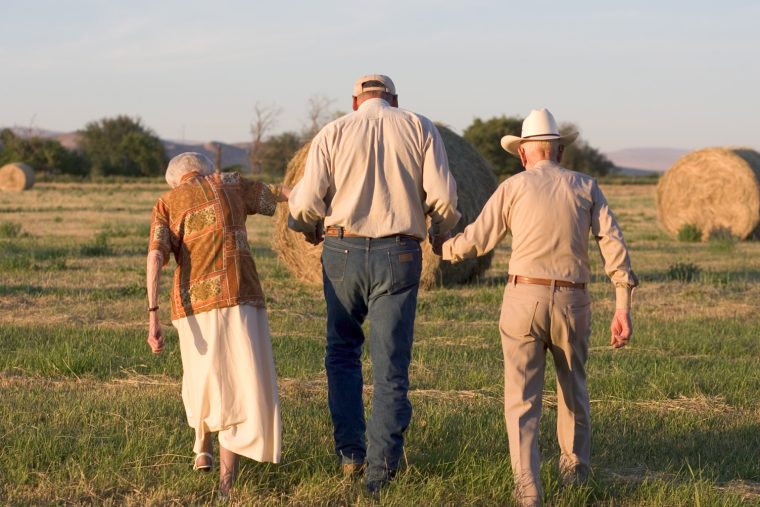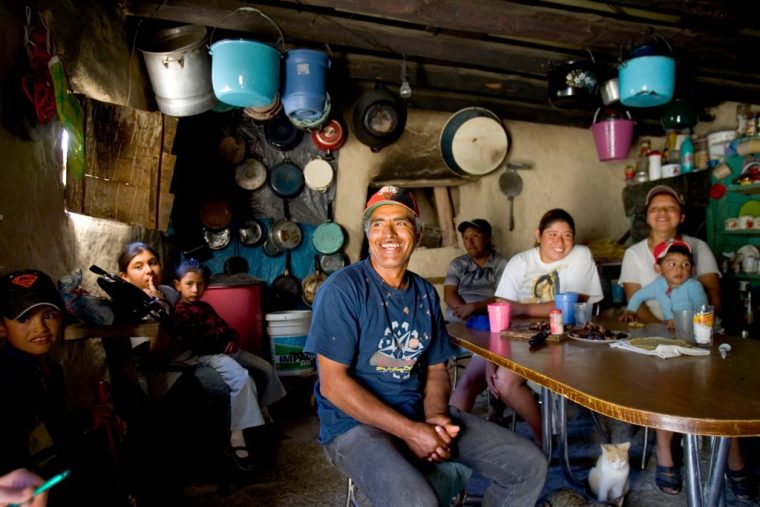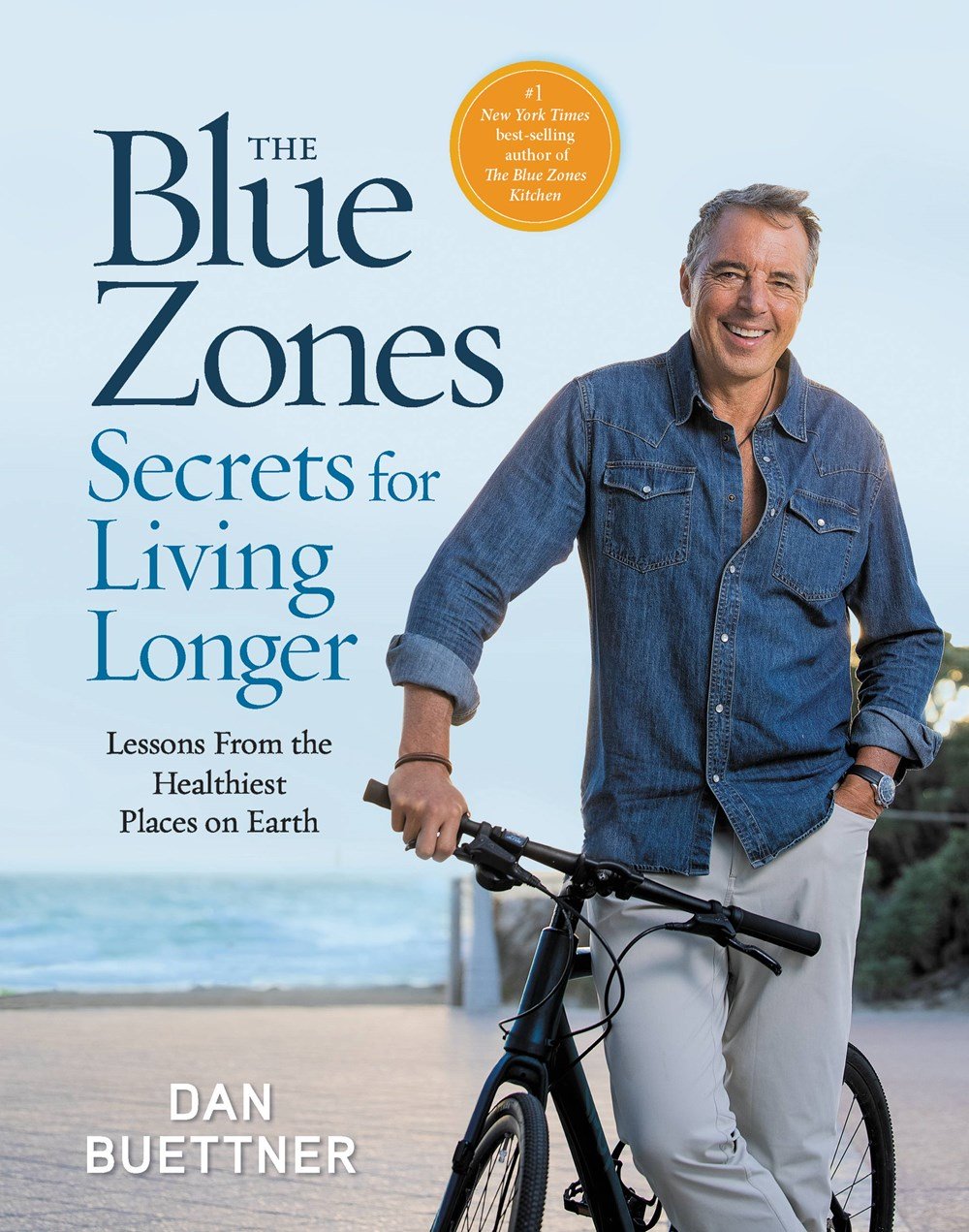I’ve been studying happiness and longevity around the world for more than two decades now, so I know a lot about those topics. In fact, I’m betting that my expertise was one of the biggest reasons that you subscribed to this newsletter.
But like anyone with expertise, I am sometimes afflicted by the curse of knowledge. I know what I know, but I forget that I know it—and just because I’ve covered something in the past doesn’t mean my present audience is automatically going to know it like I do.
The curse of knowledge isn’t usually a problem when we’re talking about health and longevity because (assuming a basic grasp of science and nutrition) so many of the things I could teach you are simple, standalone lessons. For instance: I can tell you that beans are really good for you, that they contain XYZ nutrients, that the data strongly correlates them with added life expectancy, and you can take all of that information at face value.
But I know that there might be times when a bigger shadow of skepticism sweeps across your mind, and maybe you begin to wonder how people like me can know what we know. After all, there is something literally incredible (i.e. amazing but not instantly believable) about the idea that I can teach you how to live happily to 100 years old—and with your faculties intact, no less.
Over the next few editions of Eating to 100, I’ll be spending some time talking about the scientific foundations of happiness and longevity research. I will, in other words, be going “back to basics” to explain how scientists measure happiness and longevity, and how their studies are able to draw the conclusions they do (and what those conclusions are).
I should go ahead and warn you, though: when it comes to scientific study, happiness and longevity are very different animals. By explaining the main differences, I’ll also be able to explain why this back-to-basics tour will focus on happiness, not longevity.
In brief: we’ll be talking mostly about happiness (research) because happiness is harder for most of us to define, but more applicable once we do. I’ve sometimes said that happiness is “spongier” and more subjective than longevity, but scientists studying happiness have really answered Galileo’s call to measure what can be measured, and make measurable what cannot be. By going back to basics and learning about how scientists define and measure happiness, you’ll get some vocabulary you can apply to your own life AND you’ll have an easier time seeing some simple, practical ways that you really can make your life happier.

After I explain a paragraph of easy stuff about longevity research (below), the conversational curve quickly becomes too steep to navigate with a bigger audience.
Longevity is relatively simple to define and measure (age is a number, after all). You just find a population of people whom you can follow throughout their lives, you get those people to answer some questions periodically until they die, and then you perform some analysis on the data. That kind of study might not be “easy” or quick, but once you have data, it’s just a matter of tracing the correlations between how people lived and how long people lived. Drawing conclusions is about as easy as shooting fish in a statistical barrel.
In practice, though, longevity is far trickier.
As I’ve noted before, the pursuit of longevity is twisted by paradoxes, chiefly the paradox that people who live to 100 aren’t trying to live to 100. You can hit the target of longevity, but never by aiming for it intentionally—and with these sorts of nuances in play, it’s really best to discuss longevity live and in person.
In that spirit, I should mention that I’ll be co-hosting a special, weeklong mastery workshop called Optimizing Longevity from March 28th to April 2nd in Baja, Mexico with Modern Elder Academy (MEA) co-founder Chip Conley.
In these intimate workshops, we’ll be tackling some of the bigger, more elusive questions of longevity like how to (re)frame aging, how to tap into your life purpose, and more generally, how to truly live well in ways that go beyond scientific findings.
You’re welcome to join me! If you’re interested, just click here for more info and I’ll hope to see you there.
Otherwise, let’s carry on with today’s big findings on human happiness!

I’ll explain more about the scientific definitions and measurements of happiness next time in Edition 15, and I’ve decided to save that stuff for next time because I don’t want this to be the boring, “scientific studies explained” edition.
For today, I want to jump straight to the bottom line of the longest longitudinal happiness study the world has ever conducted… and it might surprise you how stark and simple its conclusion is.
The study is called the Harvard Study of Adult Development, and it’s been going since 1938 (that’s 85 years this year). In case you want to read along, I’m drawing from this article in The Atlantic which was written by Robert Waldinger and Marc Schulz, the Study’s current director and associate director respectively.
As Waldinger and Schulz explain, the Study strives to answer one simple question: what makes people flourish? In other words: what helps people to live their best, healthiest, and happiest lives?
The conclusion: more than anything else, good relationships contribute to our health and happiness. It might not be completely clear why this is true, but it’s certainly clear to scientists that this is true.
Let’s talk about how the researchers arrived at this conclusion, starting at the very beginning.
There were originally 724 participants in the Study—all men, but a mixture of Harvard undergrads and disadvantaged peoples of Boston—and over time, the study grew to incorporate the spouses and descendants of the original participants. Every couple of years, the researchers would send participants questionnaires and collect some basic health data; they would also interview participants periodically to get a fuller sense of things in the participants’ own words.
Over the years, a lot of participants have commented that these regular questionnaires and occasional interviews have given them, in Waldinger’s and Schulz’s words, “a welcome source of perspective on life and relationships.”
But on the other side of the coin, those check-ins can be emotionally challenging for some participants at some times. The evidence is both implicit (like people skipping select questions or whole sections, or just not returning the questionnaire at all) and explicit (people would “return fire” with comments in the margins, like what kinds of questions are these?!).
It’s clear, in other words, that the topic of one’s social fitness can strike a nerve when we’re asked about it, and this is especially true as we get older. Let’s call this an important clue.
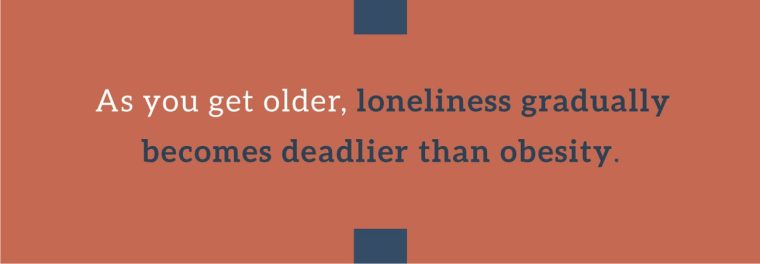
In general, loneliness can increase your sensitivity to pain, suppress your immune system, diminish your brain function, and disrupt your sleep—and once you get older, ongoing loneliness also increases your odds of death by 26% in any given year.
But loneliness isn’t just an individual problem; in modern times, and especially in the wake of coronavirus, loneliness has become something of a pandemic unto itself. In a worldwide study with 55,000 respondents, one in three people reported that they often feel lonely. Think about how many people that is.
Still, it gets worse, and particularly for us here. In 2020, 32% of Japanese adults expected to be lonely most of the time—again, think about that for a second—and in 2019 in the US (before COVID even hit us), three out of four adults felt moderate to high levels of loneliness. I can only imagine it’s gotten worse in the short-yet-also-eternal years since.
At a population level, the good news is that one person’s solution for loneliness often becomes two people’s solution for loneliness; in other words, we help others by helping ourselves here. But the bad news is that loneliness isn’t a monolithic condition; people perceive it, experience it, and resolve it in different ways. It’s only made more complicated by certain paradoxes which are no less real for being clichés—like the ways that people can feel alone even in crowds or connected even in solitude.
So, alas, the responsibility for figuring out some resolutions to loneliness falls back on our shoulders. I don’t need to explain to you why you (probably) don’t want to be lonely—but just to help this discussion stick, I’ll persist in asking an important rhetorical question. Why bother trying to improve your social fitness?
You’ve probably heard before that, when they ask the dying what they regretted most about their lives, the most common answer is/was that they regretted working so much (sobering, though the question basically demands a sobering answer). But here’s the heartwarming counterpart: when you ask the dying what they treasured most about their lives, the most common answer is/was their relationships.
In the end, we really are social animals. All of us, even introverts, tend to value our time spent with loved ones above everything else by the time we’re dying. So why not maximize that which we end up treasuring most?
The science is here to validate all of this, but as Waldinger and Schulz said themselves, you don’t even need the science to know that their conclusion has some truth to it. Just think of how it feels (in your body) to sense that somebody sees and accepts you in the course of a good conversation; if you can place that feeling, you’ll know in your bones how much of a difference people can make in our lives.
The tricky part is nurturing those relationships over the long haul. So, finally, we come to a few spare pieces of advice.
First, though, a clarification on Waldinger’s and Schulz’s behalf. They’re not saying that every free second has to be spent socially, with our friends and loved ones, for us to live our best lives. That’s not how life works and, frankly, it’s not how some relationships function at their best. (In their words: “Some relationships work because they’re exercised sparingly.”)
Having said that, three spare pieces of advice:
- You never have time unless you make time and, judging at least by some broad-stroke statistics (in the linked article), we spend an awful lot of time doing mindless things by ourselves, things that don’t actually bring us very much pleasure (like watching TV). Take a closer look at where your time is actually going and you’ll have a much easier time convincing yourself to block off some of it for a bigger, better, happier purpose.
- Pick an “anniversary occasion” to take stock of your social world. Some good times to make time for your social fitness, and to check in with the bigger picture of it, include birthdays and the start of new years. You don’t have to dedicate much time to this, or very often, but once a year is probably a good interval for checking tabs on your friends and relationships and pondering what you might want to do with them down the road.
- If you’re afraid or even ashamed that you haven’t kept up with people as well as you could have, take a moment to consider (given the stats above) how common this is. In other words, it’s not just you who feels this way! So for just a moment, consider these possibilities: (A) that people who have reached out would still be happy to hear from you, and (B) that people who haven’t reached out to you are probably feeling the same way you are, and are just praying that you’ll break the ice for them.

Carbohydrates get a bad rap nowadays, but fats might get it even worse.
Fats, like carbs, are substances our bodies need—they’re two of the three macronutrients, along with protein—and they exist naturally in raw whole foods. But a lot of us still avoid all forms of fat and/or carbs like the plague, or we eat them with a gnawing sense of guilt.
I would suggest, first of all, that there’s a reason Samin Nosrat’s seminal cookbook is called Salt Fat Acid Heat: those are basically the primordial elements of cooking, and fat does deserve to be one of those four elements. In her own words, from the Introduction:
“There are only four basic factors that determine how good your food will taste: salt, which enhances flavor; fat, which amplifies flavor and makes appealing textures possible; acid, which brightens and balances; and heat, which ultimately determines the texture of food.”
Cooking aside, though, we (our bodies) really do need fats!
So I want to shed some light on fats in roughly the same way that I’ve been shedding light on carbohydrates. A few questions I’ll be answering over this and the next edition:
- Why does the body need fats?
- Why do chefs need fats? (Totally different question from the above.)
- When are fats good for you, and when do they kill you?
- How does frying work, and can any form of it ever be good for you?
So let’s start with the simple stuff at the top. Here are five of the many reasons your body needs fats:
- They’re an essential source of energy. They’re not as “quickly burnable” as carbs, but they’re burnable nonetheless. The body is still very happy to receive energy as fat, roughly the same way anyone would still be very happy to receive free money in their savings account rather than their checking account.
- They’re a source of fatty acids which the body can’t produce on its own. This means, in simple terms, that the only natural way to get certain nutrients (like omega-3s) is to eat fats, plain and simple. These fatty acids will go to all kinds of important uses, as you’ll see a couple bullets down.
- They allow the body to absorb fat-soluble vitamins. Aside from providing certain nutrients that the body can’t get any other way, fats also help the body to “take delivery” of certain vitamins like A, D, and K. Anything “fat-soluble” requires fat to be able to enter the body’s cells.
- They support cellular, pituitary, dermatological, and nervous-system functions (among others). Fats don’t just go to our bellies and the other places we can see; they also go to a lot of places we can’t see from the outside, and they play roles we’d never imagine fat playing. Two examples: fat is necessary for the production and regulation of hormones (including growth hormones), and fat helps to maintain the myelinated sheaths around our nerves so that they can continue sending messages without any hiccups.
- They protect our organs and insulate our bodies from the cold. If you had a Midwestern relative who joked about their fat being useful in the winter, they weren’t actually wrong. And if you ever noticed that heavyweight boxers don’t seem to be afraid of a little fat on their bodies, that’s also not a coincidence; body fat helps to pad our organs from injuries inflicted by the outside world. (I miss Uncle Steve.)
But as you probably know, not all fats are created alike; some of them are better for you than others. None of the guidelines are airtight or perfectly clean-cut, but here’s maybe the closest I can come to three practical pointers on the healthy consumption of fat:
Pointer № 1: Don’t overdo it with fats unless you know what you’re doing. I say “unless you know what you’re doing” mostly to account for folks on a ketogenic diet (which, in essence, replaces carbs with fats as the body’s main energy source). Otherwise, it’s unwise to overdo it on the Nutrition Facts guidelines for the same reasons everybody already knows: fats have a lot of calories (which add up to weight gain pretty fast), and fats (especially the unhealthy ones) can increase your risk of heart disease and stroke later in life.
Pointer № 2: As a general rule, unsaturated fats are better than saturated fats, which are better than trans fats. The mental image I want you to have here is the difference between olive oil (unsaturated), butter (saturated), and Crisco (trans). If the fat is liquid at room temperature, it is probably going to be healthier than the alternatives which are solid or semi-solid at room temperature.
I should be clear that this is a bit of an oversimplification. First of all, not all trans and saturated fats are equally bad; there’s natural trans fat in a lot of dairy products, but it’s not nearly as harmful as industrial trans fats like you’d find in Crisco. (Recurring theme: the artificial, processed equivalent of a natural food product is almost always going to be worse for you, even if the Nutrition Facts read exactly the same.) Likewise, an avocado has the same amount of saturated fat as three slices of bacon, and yet avocados decrease your level of “bad” LDL cholesterol where bacon raises it.
This brings me to my final piece of advice for today…
Pointer № 3: In a pinch, it’s more important to be mindful of the foods you’re eating than the fats you’re eating. Nutrition Facts labels lump together a lot of the particular details (in this case, exactly which kinds of fats are in a food), which is frustrating until you realize that (A) there’s not much space on the label and (B) we can Google for more details nowadays.
My point is that, without being able to trust the Nutrition Facts for a precise breakdown of fat content in real time, we need to have some simpler and more intuitive ways of assessing the quality of the fats in our foods.
We should still be consulting the Nutrition Facts for the numbers, at least for general reference, but we should also rely on our educated intuition about nutrition to make wiser choices. We should know, at some level, that an avocado is better for us than three slices of bacon—or that plain, pure olive oil is better for us than Crisco, a man-made creation the likes of which Nature will never produce.
You shouldn’t rely on that intuition alone, but you should continue to listen to it. If it was just a matter of needing permission, you now have mine. ?
More on fats (and frying) next time!

The Better Vinaigrette Salad

Ingredients
5 medium beets, scrubbed
3 medium sweet potatoes, scrubbed
2 carrots
½ cup frozen peas
½ cup diced pickled cucumbers
½ cup sauerkraut
½ cup diced raw Persian cucumbers
2 tablespoons olive oil
½ tablespoon apple vinegar
Salt
½ cup finely chopped green onion
The Method
Add the beans to a large pot. Cover with more than 3 inches of water, bring to a boil, and then reduce to a simmer. Simmer for 45 minutes to 1 hour, tasting after 45 minutes to get the desired tenderness.
Fill a separate large pot with enough water to cover the beets and bring to a boil.
Add the beets and cook for 45 minutes to 1 hour, checking after 45 minutes to reach the desired tenderness.
In separate pots, boil the carrots and sweet potatoes for 30 minutes each until their skins easily come off with a fork or knife. Drain the vegetables and refrigerate them or let them sit in an ice bath until chilled.
Peel the skin from the beets, sweet potatoes, and carrots, and finely dice them into even cubes.
In a separate pot, boil the frozen peas for 6 to 8 minutes. Drain and cool to room temperature.
In a large mixing bowl, add all the vegetables, oil, vinegar, and salt to taste. Mix to combine.
Allow the ingredients to sit together for at least 2 to 3 hours (or overnight).
Serve topped with the green onion.


